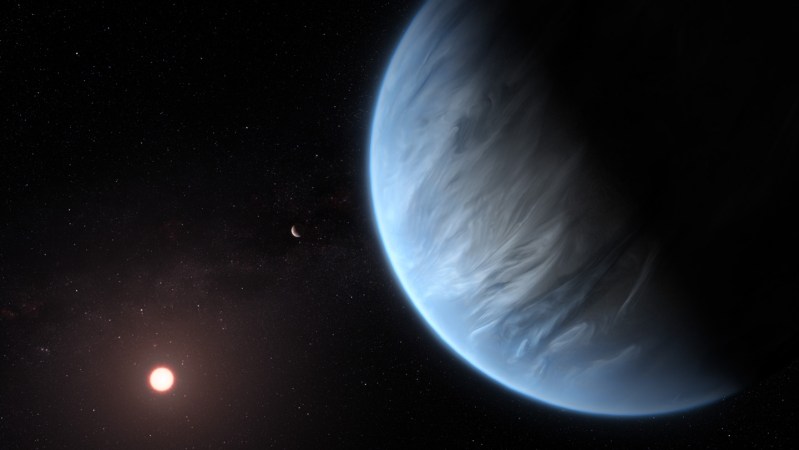Recent laboratory experiments have revealed that some planets might have the ability to produce their own water rather than relying solely on external sources. A team of researchers simulated extreme conditions similar to those found in certain exoplanets by utilizing high-energy lasers to bombard olivine, a mineral commonly located in planetary interiors, in the presence of hydrogen gas. Their findings, published on October 29, 2023, in the journal Nature, offer a compelling explanation for the water-rich composition of exoplanets that orbit closely to their host stars.
The discovery holds particular significance for the understanding of hundreds of exoplanets identified between the sizes and masses of Earth and Neptune. Many of these celestial bodies orbit much closer to their stars than Earth does to the Sun, leading scientists to question how they could possess such high water content. Traditionally, a divide exists in our solar system concerning planetary formation, with planets forming inside the “snow line” experiencing scarcity of water. For example, Venus, located within this line, is largely devoid of water, while planets like Saturn and Neptune, formed outside of it, are abundant in water and gas.
Astrophysicists previously theorized that planets rich in water must originate far from their stars and later migrate inward. However, the new study suggests that under specific conditions, chemical reactions between hydrogen and minerals can generate water in situ, or locally. Achieving the high temperature and pressure necessary for these experiments proved challenging. Researchers employed a diamond anvil cell, a tiny container capable of withstanding extreme conditions, to conduct their experiments.
The use of pulsed lasers, which heat samples for brief intervals, minimized the risk of hydrogen infiltrating the diamond’s carbon lattice, a critical factor in achieving successful results. Harrison Horn, a planetary scientist at the Lawrence Livermore National Laboratory in California, noted the surprising results when the experiment finally succeeded. “There was no rock left. All I had was metal and water,” he stated.
Furthermore, geophysicist Dan Shim from Arizona State University emphasized the scale of water produced in these experiments, indicating that approximately 18 percent of the initial mass was converted into water. This process could potentially occur at the boundary between a planet’s rocky core and its gaseous hydrogen atmosphere, where the right conditions are present to drive the reaction. The researchers estimate that the final water content of these planets may range from 5 percent to 28 percent of their total mass.
The implications of this study extend to the classification of exoplanets. The resulting worlds could either be massive ocean worlds, two to five times the size of Earth and enveloped by deep liquid oceans, or “hycean” worlds, characterized by oceans under a thick layer of hydrogen. Shim described these worlds as existing on a continuum rather than as distinctly separate types, suggesting they are interrelated, much like familial connections.
Determining whether a planet becomes an ocean world or a hycean world is likely influenced by various factors, including its distance from the star, size, and initial composition. The study also contributes to ongoing discussions regarding the habitability of hycean worlds. While some recent research indicated that most of their water might be trapped in the mantle, leaving the surface dry, this new investigation suggests a more optimistic view on the potential for supporting life.
These findings could also reshape our understanding of Earth’s own water sources. Although the high-pressure, high-temperature conditions required for such reactions are not present on modern Earth, they may have existed during its formation. An early Earth, characterized by a thick hydrogen-rich atmosphere, could have facilitated similar water-generating reactions. Evidence from ancient deep-earth diamonds, which contain tiny water vesicles with distinct chemical signatures, supports the idea that Earth may have two reservoirs of water: one acquired through early chemical processes and another delivered by water-rich comets and asteroids from the outer solar system.
The research underscores the complexity of planetary formation and the potential for diverse environments in the cosmos. As scientists continue to explore these captivating possibilities, the insights gained from this study may illuminate the origins of water on Earth and beyond, enhancing our understanding of the universe’s potential for life.
